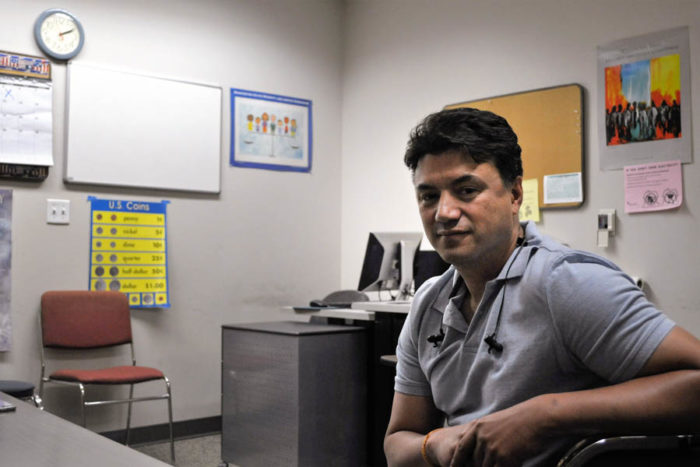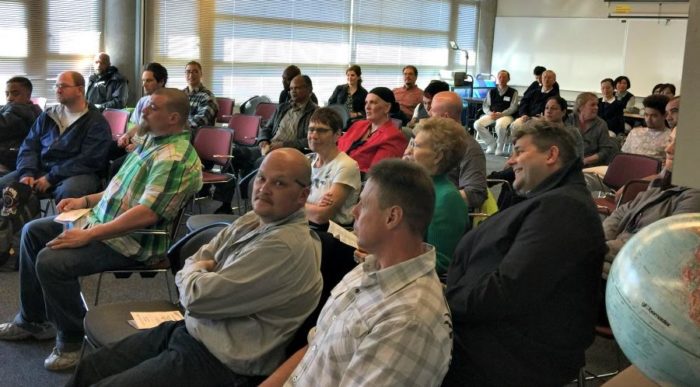
Kristopher Larsen was in line at a supermarket two days after his release from prison last year, when an inattentive man reading a newspaper grazed his his back lightly.
Larsen, who served a 10-year sentence, kept inching forward to get some room, but the man kept moving close to him. Finally, Larsen turned around and snatched the paper from the man’s hands, angrily asking the stranger what his problem was.
This response, Larsen said, is natural in prison.
“It’s almost like post-traumatic stress disorder,” Larsen said.
It’s an example of the psychological and behavioral struggles people face when transitioning out of prison. The steady movements of inmates in uniform is replaced by the chaotic buzz of people in a supermarket.
The strict regimen and the feeling of captivity are both gone and replaced by a daunting sense of freedom, Larsen said.
According to Larsen, those who have served for a decade or more even find themselves wishing they could go back to prison because the system is familiar to them. In prison, at least they know the rules.
Larsen now works to reverse those habits as an instructor for the Urban League of Metropolitan Seattle. He also works on education and immigration issues with the Formerly Incarcerated Group Healing Together, otherwise known as F.I.G.H.T., an organization that assists Asian Pacific Islanders who are incarcerated or have been recently released.
The difficulties in reintegrating after release are well documented. A study from the University of California, Santa Cruz found in 2001 that former prisoners have trouble adjusting to release because of separation from their family and friends, unaddressed mental health issues and the creation of “habits of thinking and acting that can be dysfunctional” at the time of release.
Studies in countries such as Sweden and the United Kingdom also show that former inmates are at a substantially higher risk of committing suicide.
A study of prisoners release by the Washington State Department of Corrections found in 2010 that the risk of death among ex-offenders in the two weeks after release is 12.7 times higher than other state residents. Drug overdose, homicide and suicide were among the leading causes.
At South Seattle College’s New Holly Learning Center, students in transition take a five-week course. But the first week of the course focuses on mental wellness and family relationship health.
The psychological transition is the priority, said Joseph Garcia, lead instructor and program coordinator for the Corrections Education Programs.
“Don’t even talk about a welding course,” he said.
The transition process starts with developing basic soft skills and on “learning to learn again,” he said.
“We have to focus on their current reality, not just what we hope for them or what we think they should be.”
Garcia said the students in the class have a one to three-year transition window to pass general education development tests and find work and housing. In the course, they also learn how to navigate the job market and write resumes and cover letters.

Ex-inmates in Washington also get a few breaks that aren’t offered to ex-inmates in other states. Residents with a criminal conviction are not deprived of state benefits and food stamps and are also eligible to apply for certain jobs previously excluded them.
In 2013, a new Seattle law began to restrict how employers in the city use arrest and conviction records during the hiring process. Before that, applicants had to check if they had any criminal convictions in the past.
Garcia said it’s not perfect, but it’s a start. He says the programs need more funding, but they have been shown to work.
“Our process for change is certainly a model,” Garcia said.
Learn more
Huskies for Opportunities in Prison Education (HOPE) will host Larsen and others on a panel discussion at 6:30 p.m. Monday, May 23 at the Intellectual House on the University of Washington campus. More information is on the event’s Facebook page.


Thank you for the very interesting information you shared. We need people like Garcia. Newly released prisoners often have psychological problems, they need help.